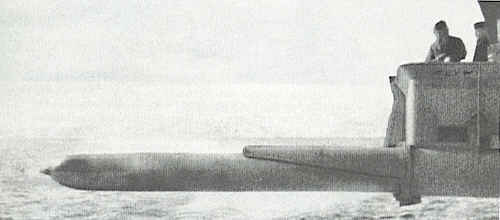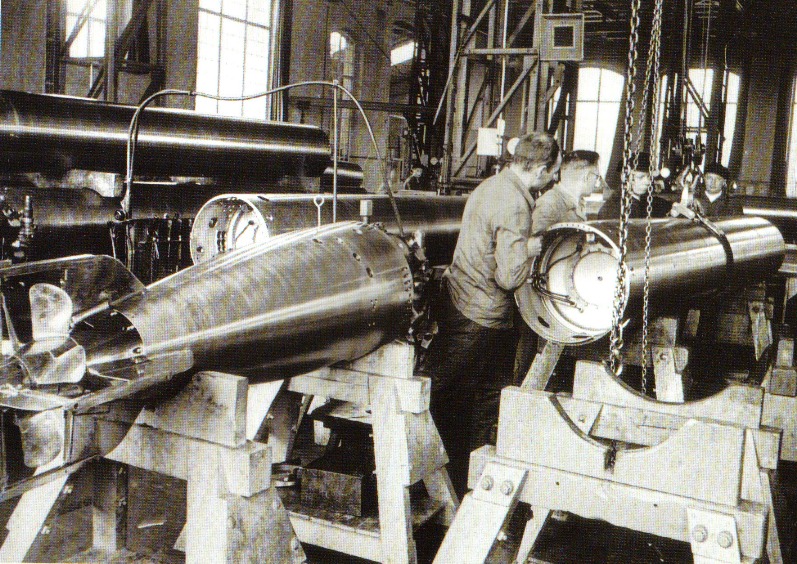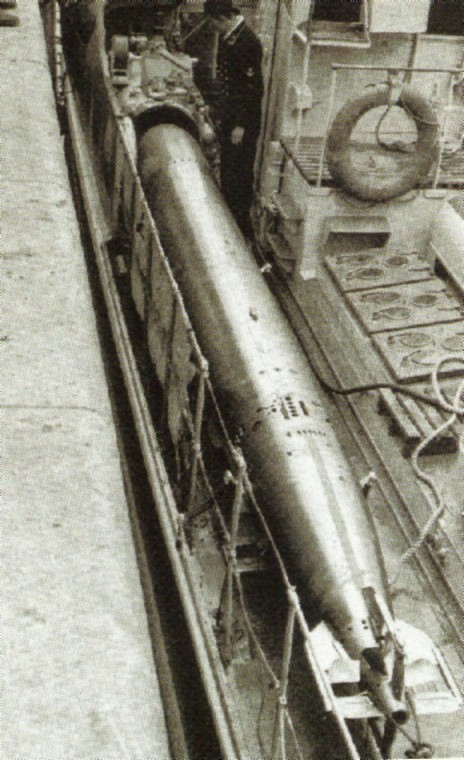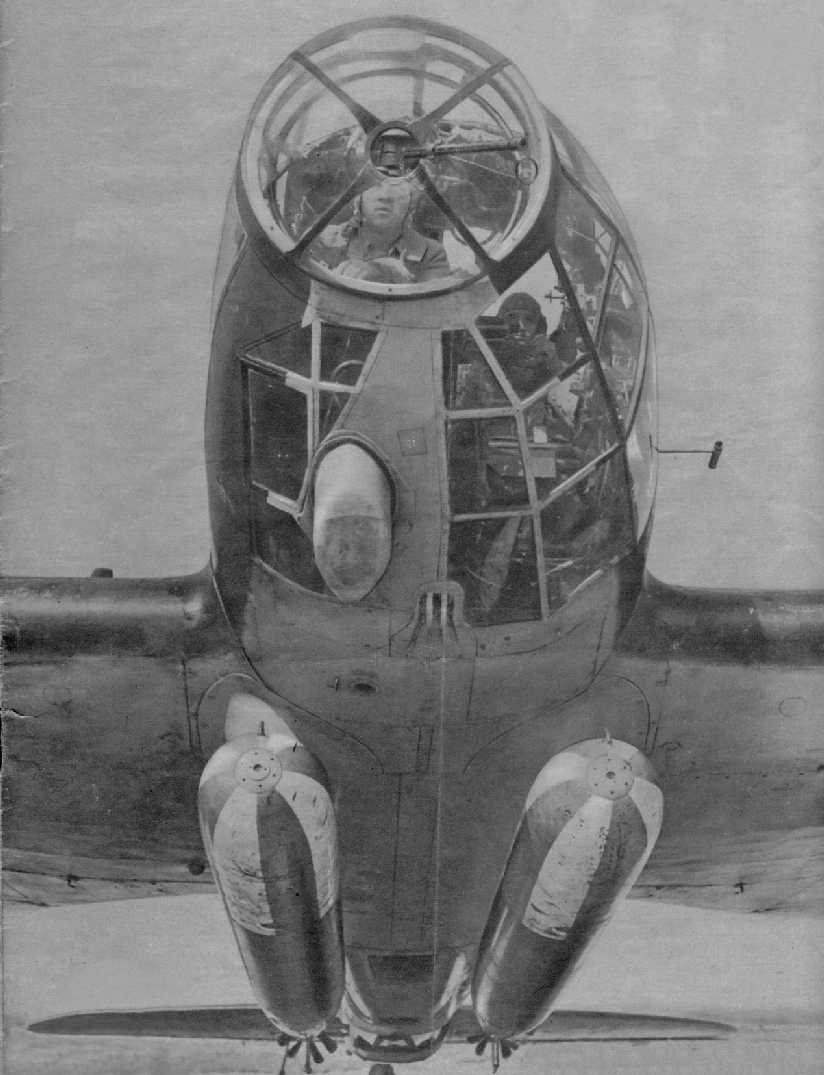
Battleship Tirpitz firing a torpedo |
|

G7a Torpedoes being repaired at Ostende
in 1940
|
|

G7a Torpedo being loaded on an S-Boote
|
|
| Ship Class Used On | Surface ships and Submarines |
| Date Of Design | about 1930 |
| Date In Service | about 1938 |
| Weight | 3,369 lbs. (1,528 kg) |
| Overall Length | 23 ft. 7 in. (7.186 m) |
| Negative Buoyancy | 605 lbs. (274 kg) |
| Explosive Charge
(see Notes) |
617 lbs. (280 kg) Hexanite |
| Range / Speed | 6,560 yards (6,000 m) / 44 knots
8,750 yards (8,000 m) / 40 knots 15,300 yards (14,000 m) / 30 knots |
| Power | Decahydronaphthalene (Decalin) Wet-Heater |
| Notes:
Also known as "Ato," this torpedo was issued throughout the war and was considered to be very reliable. It was developed almost directly from the 50 cm (20") G7 of World War I and differed from those of other nations by using Decalin (decahydronaphthalene) instead of kerosene for fuel. Producing this torpedo took about 3,730 man hours per torpedo in 1939 but this fell to 1,707 hours by 1943. This was significantly more than what it took to produce the electric G7e. The 44 knot speed was found to overload the engine and was not used during the early years of the war. The early models used in 1939 had ranges about 20% less than those given above. Used a four-cylinder radial engine that drove a single six-bladed propeller. The Federapparattorpedo (spring-operated torpedo) or FAT variation had a simple guidance system that allowed a series of long or short legs or loops at the end of a configurable length of straight course. Starting about mid-1944, the Lagenunabhängiger Torpedo (LUT) variation was introduced which was a more sophisticated version of FAT. LUT could be fired at any target angle and could follow a curved path to its target. LUT had problems with the targeting gear not disengaging at launch, resulting in "tube runners" and appears to have been rarely used after December 1944. Warhead weight for these torpedoes confilicts in many references. I have seen numbers as low as 617 lbs. (280 kg) and as high as 948 lbs. (430 kg). It is possible that the lower numbers were for torpedoes issued early in the war and then heavier warheads were introduced during the war. |
|

